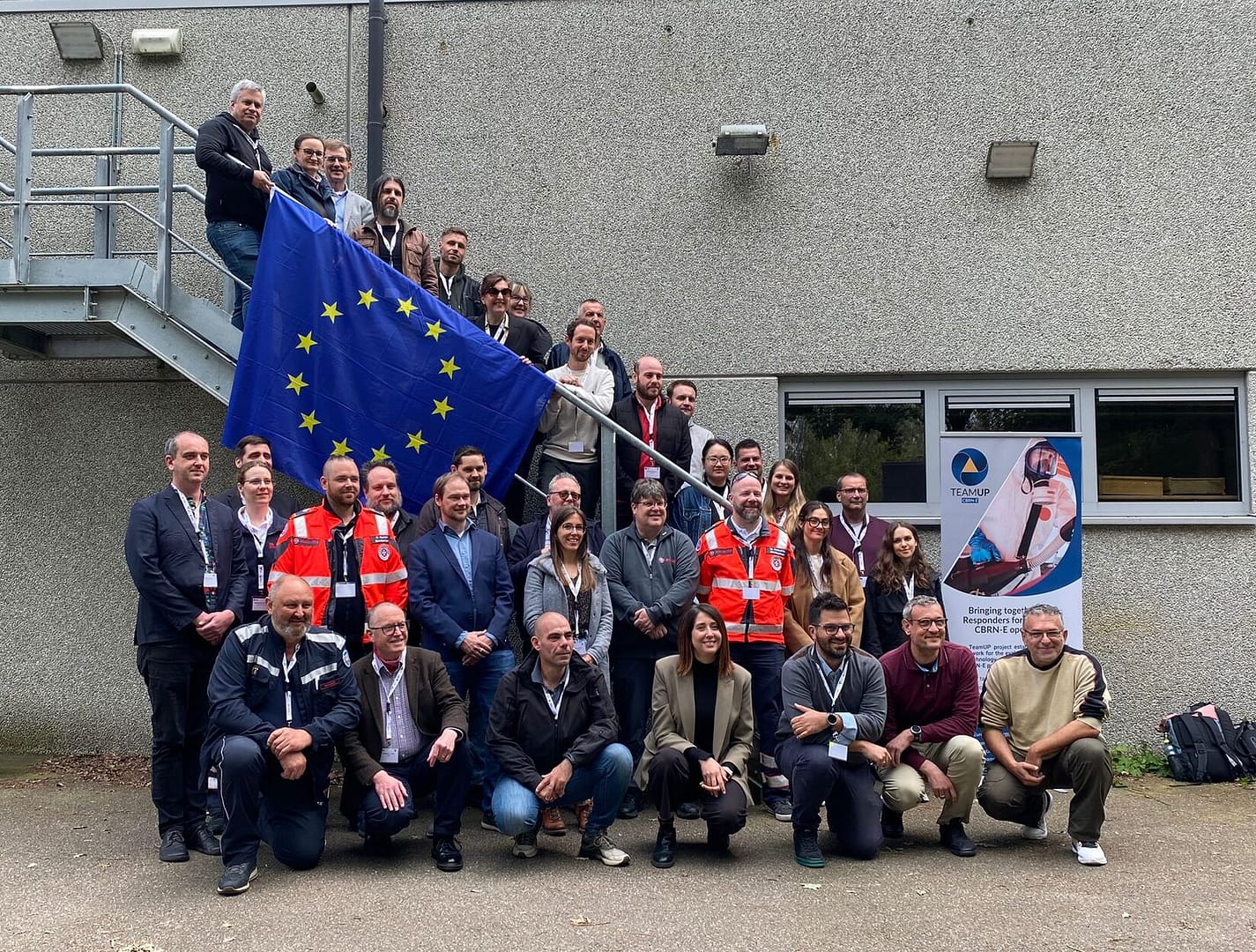Plenary Meeting in Ranst, Belgium
On 12th and 13th June, the TeamUP consortium came together for the second guided Table Top Exercise, the second guided Small Scale Exercise, the Co-Creation Workshop and the TeamUP consortium meeting. The partners from 23 organisations and the external Advisory and End User Board members were hosted by Campus VESTA in Ranst, Belgium.

The day started with the Table Top Exercise, which simulated a chemical explosion in a collapsed building with SaR, DIM, resource management and communication of the evolving situation on the ground between the managers of all involved First Responders (fire department, medics, police, civil protection and forensics). In the frame of the exercise, Campus VESTA also explained the Belgian national requirements and procedures to all participants.
The scenario was played out with active participants in the centre of the room and observers seated around tables forming the playing field. Several time-outs allowed the exercise to freeze where, on the one hand, observers could ask questions to the exercise leader, which on the other hand asked questions to the observing First Responders about the SOPs in their organisation.
Under the lead of Campus Vesta, the participants CBRN-E experts (civil protection, advisor on dangerous substances, etc.), and CBRN-E non-experts (firefighters, police officers, medical First Responders) took the most active roles in the exercise. First responders from the TeamUP Consortium, researchers as well as technology providers acted as observers, providing active feedback on SOPs in their organisation, on opportunities and feasibility for cross-team collaboration and on potential technological solutions to support the process.
The consortium assembled in four groups to observe the guided Small-Scale Exercises. Campus Vesta CBRN-E experts and non-experts performed the Detection, Identification and Monitoring of a Biological Incident (DIM-B) following a powder letter opened in a public building, a Donning and Doffing procedure and communication with personal protective equipment, the DIM-R in traffic accident with radiologic source and the triage of injured and contaminated victims.
While the experts and non-experts deployed on a limited scale, the four small groups watched the different exercises from close distance.
These exercises were instrumental to improve the understanding of current practices in CBRN-E as well as the elucidation of Modus Operandi, and set the foundation for the GAP analysis in CBRN-E response and technologies. The non-experts from other fields could familiarise themselves with the CBRN-E response process, and the consortium could drive forward the co-creation process and early demonstration of innovative concepts for the scenarios visited.
During the actions and the feedback sessions, participants improved their coping capacity of different units concerning their tasks focussing on SaR, Triage and DIM, and identified opportunities to raise the understanding within the triangle: First Responders – industry – scientists.
The second day started with the Co-creation Workshop managed by Fraunhofer and assisted by Johanniter International, where the partners split in break out groups to discuss new Use Cases that have been identified based on exercises from the previous day. The technology providers and end users got together to best map the needs of the First Responders and plan the development of the new technologies accordingly. This co-creation ensured mutual understanding and created the foundation for the technological results to build on in the coming months.
In the afternoon, the consortium meeting began with the status overview of the project. After a session dedicated to the CEN Workshop Agreement, the Work Package leaders detailed the respective tasks as well as the next steps of the project going forward. Following the discussions and closing remarks, the partners successfully concluded the Plenary Meeting with the feeling that everyone truly ‘teamed up’ during the last six months to move forward energetically into finalising the framework definition and co-creation phase of the project.